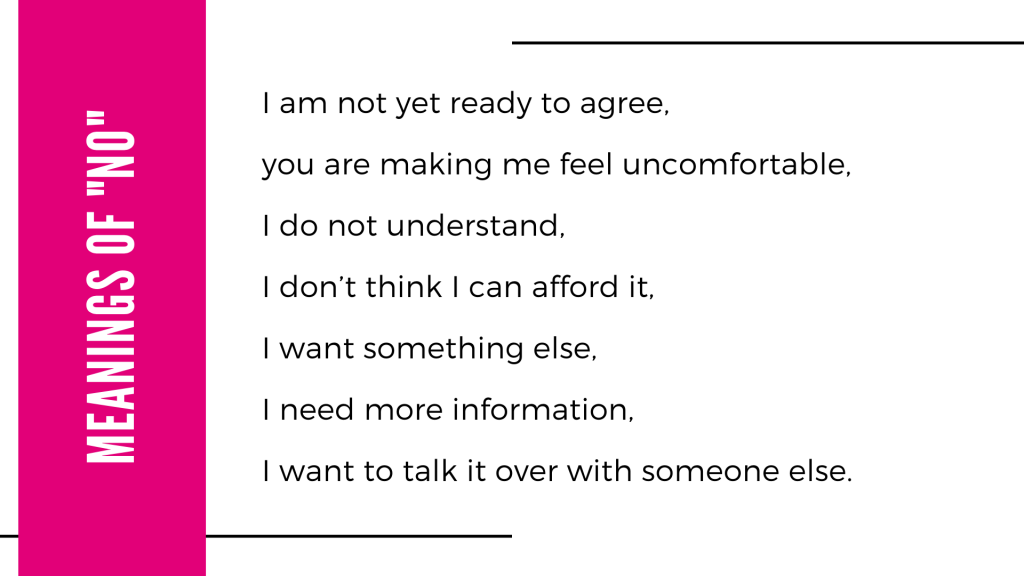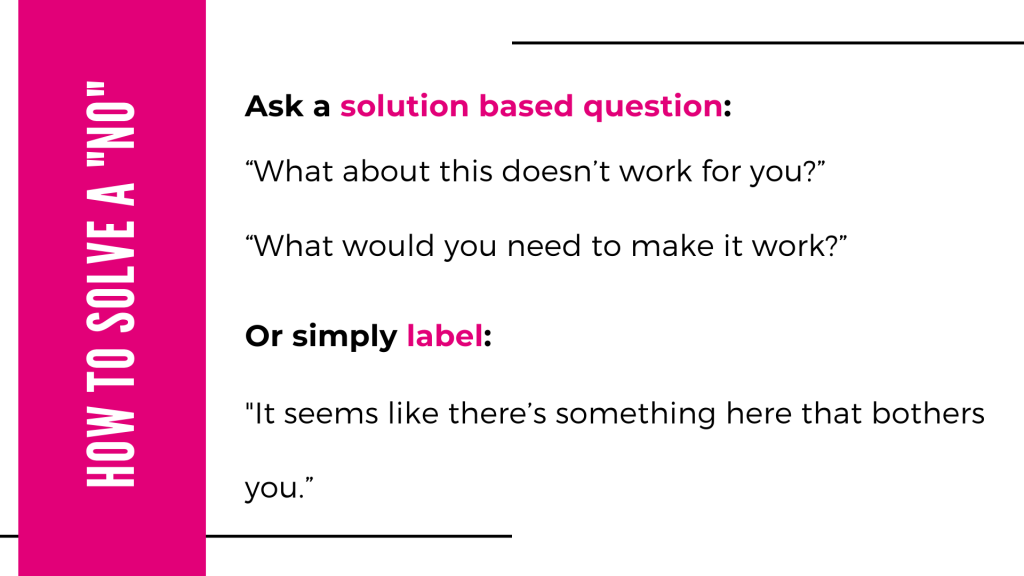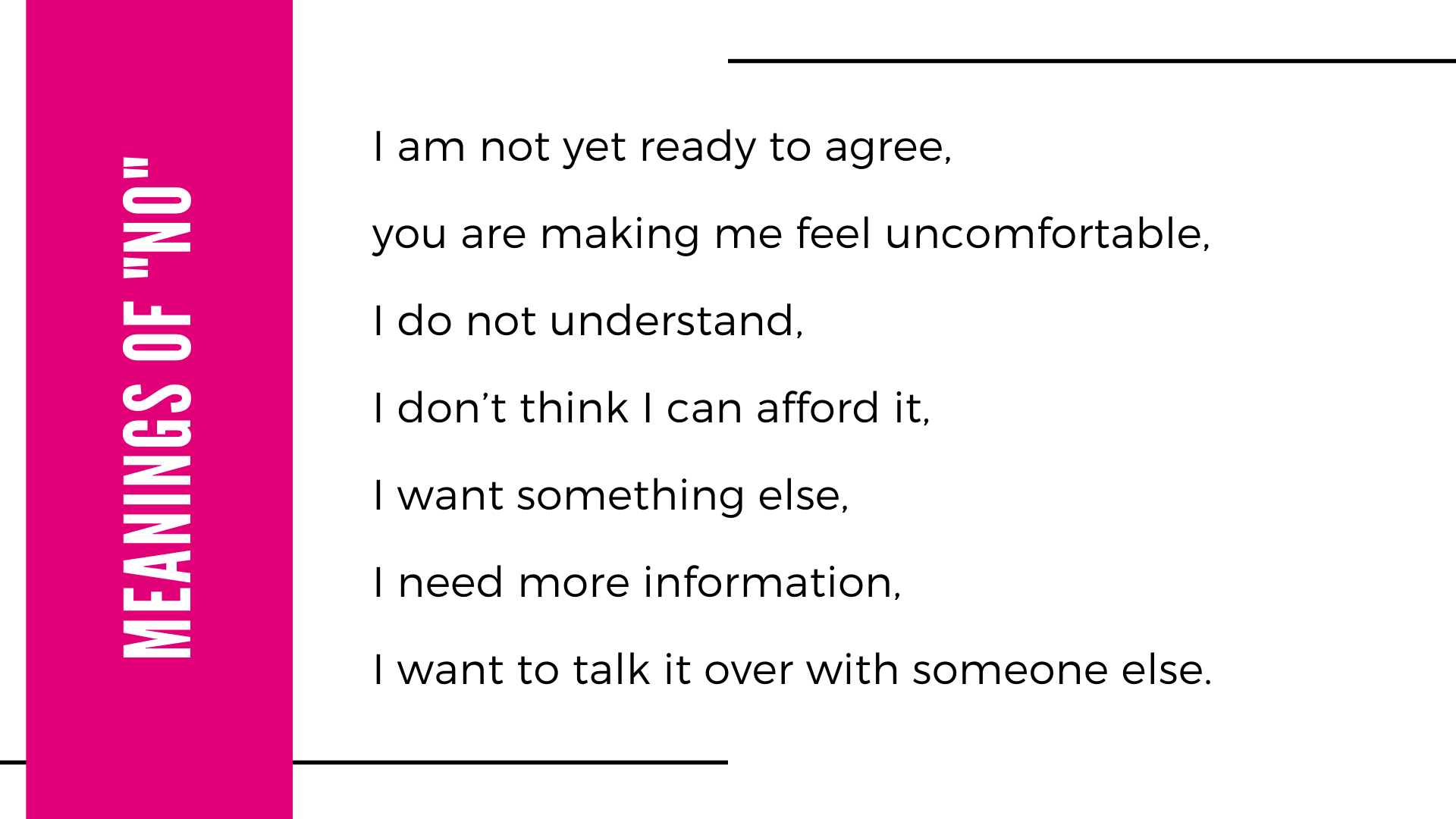PART 4: Beware YES, Master NO
Previously we learned about how to use mirroring and labeling in a negotiation, so if you haven’t read that be sure to check it out.
Now we are going to learn why we should strive for NO and avoid YES during a negotiation.
Let’s start with the missunderstood “Yes”. It is often just a way to avoid any communication at all. Think about how many times you stoped negotiating with someone with a “Yes” but didn’t really mean it. We all used our tactic when we were younger and argued with our parents. We just said “yes mom…” to get her to stop talking. We did not mean it, but we just used it to stop the negotiation.
There are three types of “Yes”:
- Counterfeit- wants to say no, but yes is an escape route,
- Confirmation-simple affirmation with no promise of action,
- Commitment- the real deal.
The last one, the commitement, is what we want at the end. And it comes at the end of the negotiation. Almost every one before that is not said with the intent to close the deal. So “No” is what we really want during a negotiation.
Yes, you read that right. “No” is the start of the negotiation, not the end of it. It is often a decision, frequently temporary, to maintain a status quo. When you give your counterpart permission to say “no” to your ideas, you give them autonomy and their emotions calm down and the effectiveness of the decision goes up, and the other party can really look at your proposal.
“No” can have the following meanings:

If they say “No” you must find out what the problem is so you can fix it for them. A “No” from your counterpart is a great way to really understand them and to achieve an agreement.
So, after they say “No” you pause. Then you ask a solution-based question or simply label:

People have a need to say “No”. Get them to say it early. Take the “No” as a sign that your counterpart is engaged and thinking.
“No” doesn’t mean the end of discussion. If used strategically, it’s and answer to open the path forward.
- “No” allows the real issues to be brought forth,
- “No” protects people from making, and lets them correct, ineffective decisions,
- “No” slows things down so that people can freely embrace their decisions and the agreements they enter into,
- “No” helps people feel safe, secure, emotionally comfortable, and in control of their decisions,
- “No” moves everyone’s efforts forward





